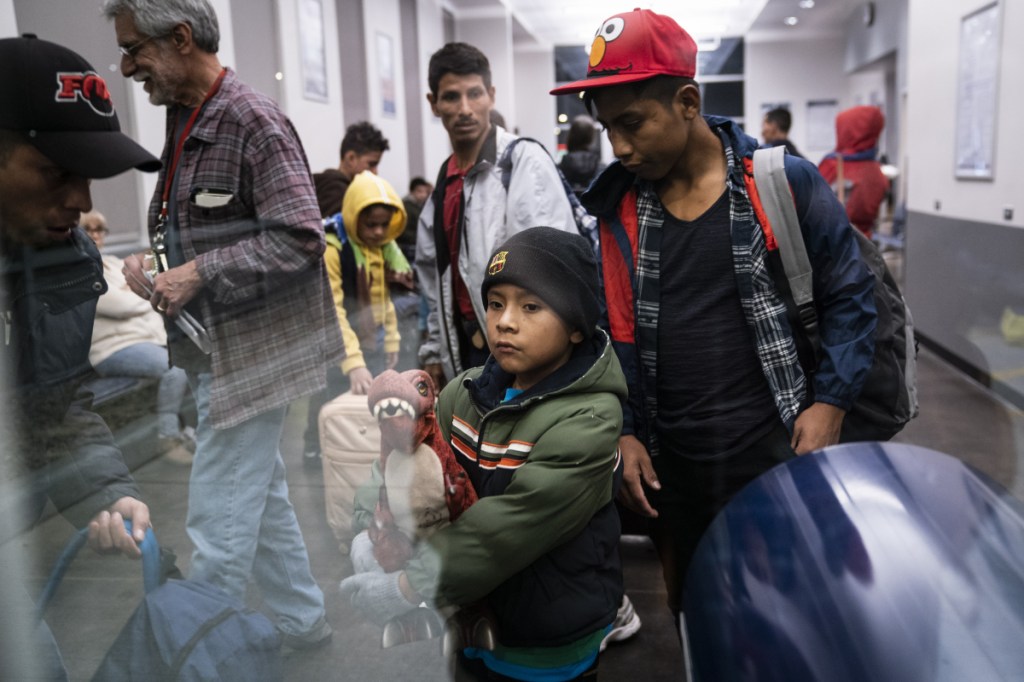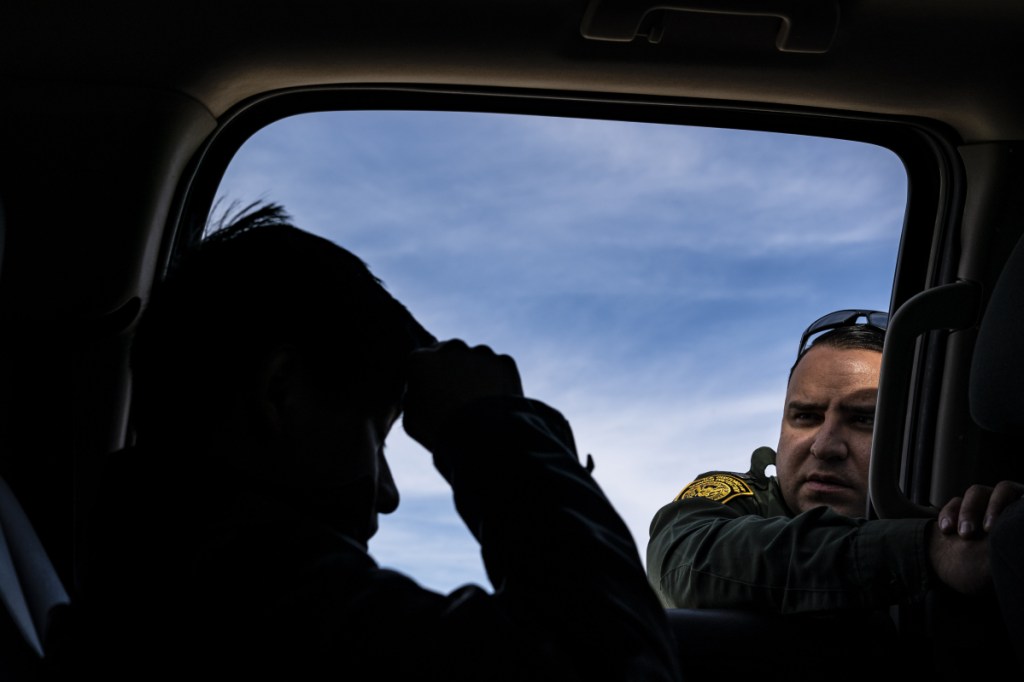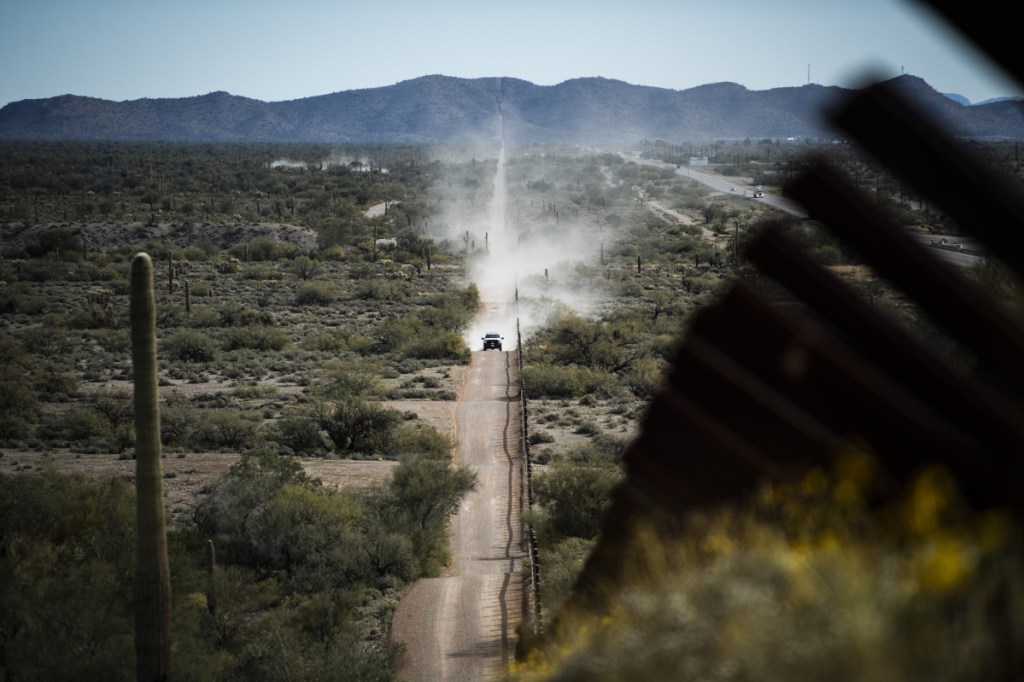ORGAN PIPE CACTUS NATIONAL MONUMENT, Ariz. — This cactus forest on the U.S.-Mexico border was quiet one recent day. No mass crossings of migrant families. No sprinters. Just two men caught sneaking into the Arizona desert.
Then U.S. Border Patrol Agent Daniel Hernandez spotted a youth alone under a juniper tree, dressed as if he were headed to church.
When the agent approached, the teenager quickly surrendered.
“Are you afraid?” Hernandez asked in Spanish. The youth nodded and said that his name was Marco and that he was from Guatemala. He was 14 but looked small in an oversize jacket, pressed shirt and pants, and too-large black Oxford shoes.
Hernandez lifted his sunglasses to appear less intimidating. He asked Marco who had left him, how he knew where the border was, and whether he carried food and water.
“Are you hungry?” he asked. “When was the last time you ate? Yesterday? You want a cookie?”
HUMANITARIAN RELIEF
The deaths of two Guatemalan children in December and the massive groups of Central American families crossing the border are increasingly transforming the Border Patrol’s role from national security to humanitarian relief, even as President Trump declares the situation a national emergency.
Well over half the people taken into custody in recent months have been parents and children, with hundreds surrendering at a time, often in isolated locations.
In other cases, youths such as Marco are dropped off by themselves. More than 1,800 Central American parents and children, a record high, crossed illegally last week on the day Trump went to El Paso, Texas, to tout the need for a border wall.
Homeland Security Secretary Kirstjen Nielsen promised “extraordinary protective measures” after the deaths of Jakelin Caal, 7, and Felipe Gomez Alonzo, 8, who crossed into the United States separately with their fathers. Since then, the federal government says it has dramatically increased its medical staff at the border.
A Mexican man died in U.S. Customs and Border Protection custody this week, however. And advocacy groups warn that the remote areas where families are crossing, and the agency’s crowded detention facilities, still pose serious risks – especially for young children.
Medical teams from the Coast Guard, the Department of Health and Human Services, and new private contractors have been triaging and examining migrant children on the border.
Border agents, hundreds of whom are also paramedics, are patrolling more far-flung areas, backed up by helicopters, buses and SUVs. The U.S. military has also helped with the evaluation and treatment of migrants.
‘NEW REALITIES’
“We’ve been adapting to these new realities,” said a senior adviser for Customs and Border Protection who was allowed to speak only on condition of anonymity.
The deaths of Jakelin and Felipe remain under investigation, and the official said the Department of Homeland Security so far hasn’t found any sign of a widespread public health crisis on the border.
The biggest challenge, Border Patrol agents say, are the large groups of migrants – 200 to 300 people at a time – crossing in distant locations, swamping the agency’s resources.
Fifty-eight large groups crossed from October to January, compared with 13 groups over the same period last year.
Some migrants arrive with colds, sprained ankles, broken bones, chickenpox and “gripe,” otherwise known as the flu. A toddler who fell from a moving vehicle in Mexico was brought to the U.S. border in January with a possible broken arm. A teenage girl cracked several vertebrae after slipping from an 18-foot-high border wall in December.
The CBP has given Border Patrol agents “enhanced” field guidance to check every child – including those arriving in large groups – and to ask if they are sick, injured, dehydrated or hungry.
Agents have also stocked up on baby formula, diapers and women’s sanitary supplies in sectors such as Yuma, where 90 percent of border crossers in January were family members and unaccompanied minors.
Migrants who are ill are sent to a hospital. The rest are taken to Border Patrol stations for more comprehensive screenings. Doctors and nurses check their vital signs, take their medical histories and administer medicine.
In one instance, on Jan. 24, the DHS flew in a physician and other staffers via helicopter to a Border Patrol station in the Tucson sector to examine 130 minors. Two youths with high fevers were taken to a hospital.
Still, the huge numbers of families arriving carry significant risk, officials say, because many cross into the United States in less-populated areas, with few agents and limited or no medical facilities.
KIDS REQUIRE MORE CARE
The CBP official said the agency is deploying general-practitioner physicians who can treat a wide array of people – including children and pregnant women. But the American Academy of Pediatrics said it has urged CBP Commissioner Kevin McAleenan to hire medics trained in pediatrics, or at least accept volunteer pediatricians, because children require more specialized care.
“Sick children are very different from adults,” said Colleen Kraft, the immediate past president of the academy, whose term ended on Dec. 31. “If you don’t have the pediatric training … you’re going to miss those children who are becoming very, very ill.”
Doctors and advocates said young children should not be housed in cold and crowded processing cells, where migrants describe sleeping on mats on the floor under silver Mylar blankets.
“It’s a law enforcement mentality,” said Marsha Griffin, a pediatrician who volunteers at a shelter in McAllen, Texas, and the co-chairwoman of the academy’s special-interest group on immigrant health.
“They are treating people as prisoners, not as children and families.”
Send questions/comments to the editors.





Success. Please wait for the page to reload. If the page does not reload within 5 seconds, please refresh the page.
Enter your email and password to access comments.
Hi, to comment on stories you must . This profile is in addition to your subscription and website login.
Already have a commenting profile? .
Invalid username/password.
Please check your email to confirm and complete your registration.
Only subscribers are eligible to post comments. Please subscribe or login first for digital access. Here’s why.
Use the form below to reset your password. When you've submitted your account email, we will send an email with a reset code.